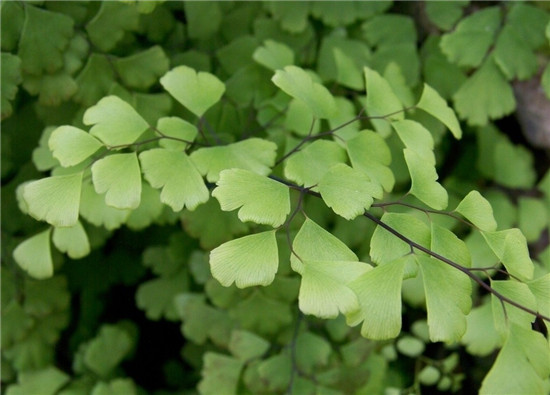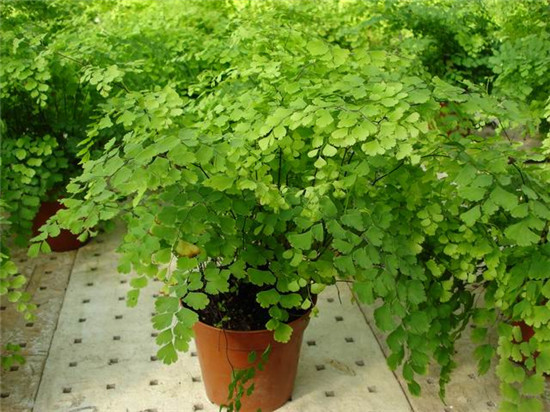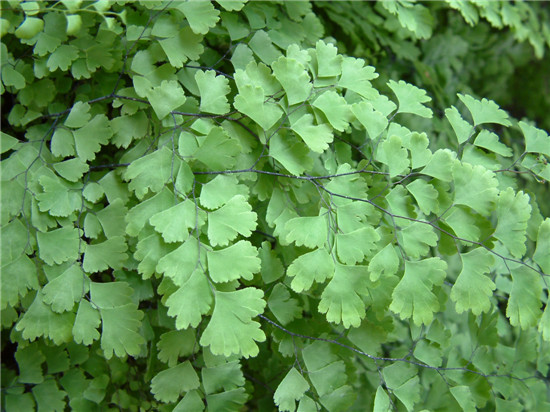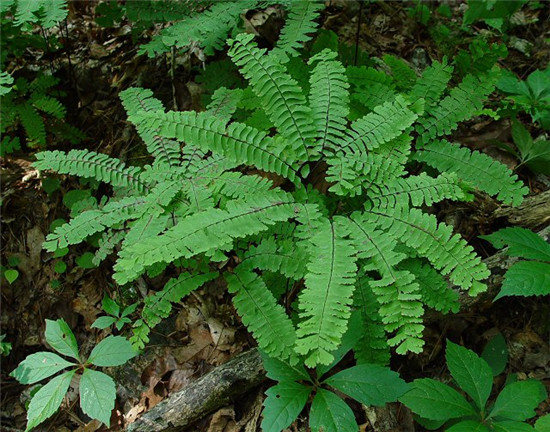How to cultivate Dryopteris Dryopteris
Dryopteris, perennial herb, common fern, let's take a look at how to cultivate Dryopteris.

Dryopteris is generally perennial can grow to 50cm or so, petiole generally occupy the general height, thickness above and below 1.3cm, compared with the eve, easy to break, often show the forehead color is black, and then the surface is full of luster. The rhizome and the bottom have scale-like parts, the leaves are mostly triangular ovate, and thin, the color is mostly grass green, rarely drink white, smooth and shiny, and there is no fluff. As a kind of Dryopteris which has been used in medicine and horticulture in ancient times, it is very popular with potted family plants and is easy to survive. So if you want to raise Dryopteris well, you must first understand its habits.
As a wild plant, Dryopteris prefers calcareous sand which is loose, breathable and moist. Unobstructed in the wild under the tree can see him, because it is not suitable for direct sunlight, under the tree can accept a small amount of scattered light. Although I prefer a temperature of about 20 degrees Celsius, the degree of cold resistance is not bad, and the general temperature of about 5 degrees Celsius can safely survive the winter. Dryopteris Dryopteris is a perennial spore breeding plant, which is generally planted as spores, but if you want to grow quickly, you can use separate plants to culture directly. The general culture method is similar to that of ferns.

What is the value of Dryopteris?
Medicinal value: the whole grass of Dryopteris can be used as medicine, it can clear away heat and detoxification, and it can also be used for dysentery, and it can also be used for dysentery. It has good therapeutic effects on lung heat, cough, hepatitis, snakebite, fall injury and so on.
Ornamental value: Dryopteris like shade, strong environmental adaptability, cultivation is very easy, very suitable for indoor perennial pot culture, if it is a small potted plant, we put it on the desk, coffee table, and larger potted plants we use to decorate the aisle or living room. And the leaves of Dryopteris fern are also good materials for cutting leaves and dried flowers, together with flower vases, which have a good ornamental value to beautify the home environment.

Common varieties of Dryopteris
Dryopteris fan leaf: the leaf is fan-shaped to irregular broad-ovate, with 2-3 palmately branched to birdfoot-shaped bifurcated branches, the middle pinna is the largest, and the pinnae have some short stalks.
Dryopteris flagellata: also known as Dryopteris Dryopteris, the leaves are linear-lanceolate, about 10-25 years long, and the tip is often elongated into a whip, which can take root on the ground.
Dryopteris cuneiformis: leaves are broadly triangular in shape, with 2-4 pinnately divided leaves, lobes rhombic or oblong.
Culture methods of Dryopteris:
1. Soil: Dryopteris likes loose, permeable and fertile calcareous sandy loam. when potted, the cultivated soil can be mixed with loam, rotten leaf soil and river sand.
2. Watering: the fern likes the humid environment and should be fully watered in the peak growing season. In addition to keeping the basin soil moist, we should also pay attention to the high air humidity and sprinkle water around the plant when the air is dry. Especially in summer, water should be watered 1-2 times a day. If there is a lack of water, it will cause the leaves to shrink. Watering taboo basin soil when dry and sometimes wet, easy to make the leaves yellow.
3. Sunshine: like bright scattered light, afraid of direct sunlight. If the light is too strong, the leaves will be withered and yellow or even die, which can be properly shaded in summer, and most of the leaves will be withered and yellow if the strong light is directed for a long time. It should be placed in a dark place indoors, and it can grow normally even if it is placed for 1 year.

4. Temperature: like warmth and cold resistance, the suitable temperature for growth is 21-25 ℃ in daytime and 12-15 ℃ at night. In winter, the leaves can keep fresh green when the temperature is above 5 ℃, but frost injury will occur when the temperature is lower than 5 ℃.
5, fertilization: apply thin liquid fertilizer 2-3 times a month, do not stain the leaf surface, so as not to cause rotten leaves, because of the calcium-loving habit of Dryopteris, the basin soil should add appropriate amount of lime and broken eggshell, and the effect of calcareous fertilizer will be better. In winter, we should reduce watering and stop fertilizing.
6. Insect pests: potted Dryopteris Dryopteris, often with leaf blight, can be controlled with Bordeaux solution at the initial stage, and 1000-1500 times of methyl topiramate in severe cases. If the plant is damaged by scale insects, 40% omethoate 1000 times solution can be used for control.
7. Pruning: after autumn, as the temperature drops, Dryopteris will grow slowly, and the old leaves will gradually turn yellow, so cut them off.
The above is the whole content of how to cultivate Dryopteris for you. I hope this article can help you. Please continue to follow us.
When the ferns enter the slow growth stage, the old leaves will gradually turn yellow, so they should be cut off.
The above is the whole content of how to cultivate Dryopteris for you. I hope this article can help you. Please continue to follow us.
Related
- Wuhan Hospital Iron Tree Blooming Result Was Instantly Frightened by the Gardener Master
- Which variety of camellia is the most fragrant and best? Which one do you like best?
- What is the small blue coat, the breeding methods and matters needing attention of the succulent plant
- Dormancy time and maintenance management of succulent plants during dormancy
- Minas succulent how to raise, Minas succulent plant pictures
- What are the varieties of winter succulent plants
- How to raise succulent plants in twelve rolls? let's take a look at some experience of breeding twelve rolls.
- Attention should be paid to water control for succulent plants during dormant period (winter and summer)
- Watering experience of twelve rolls of succulent plants
- Techniques for fertilizing succulent plants. An article will let you know how to fertilize succulent plants.



